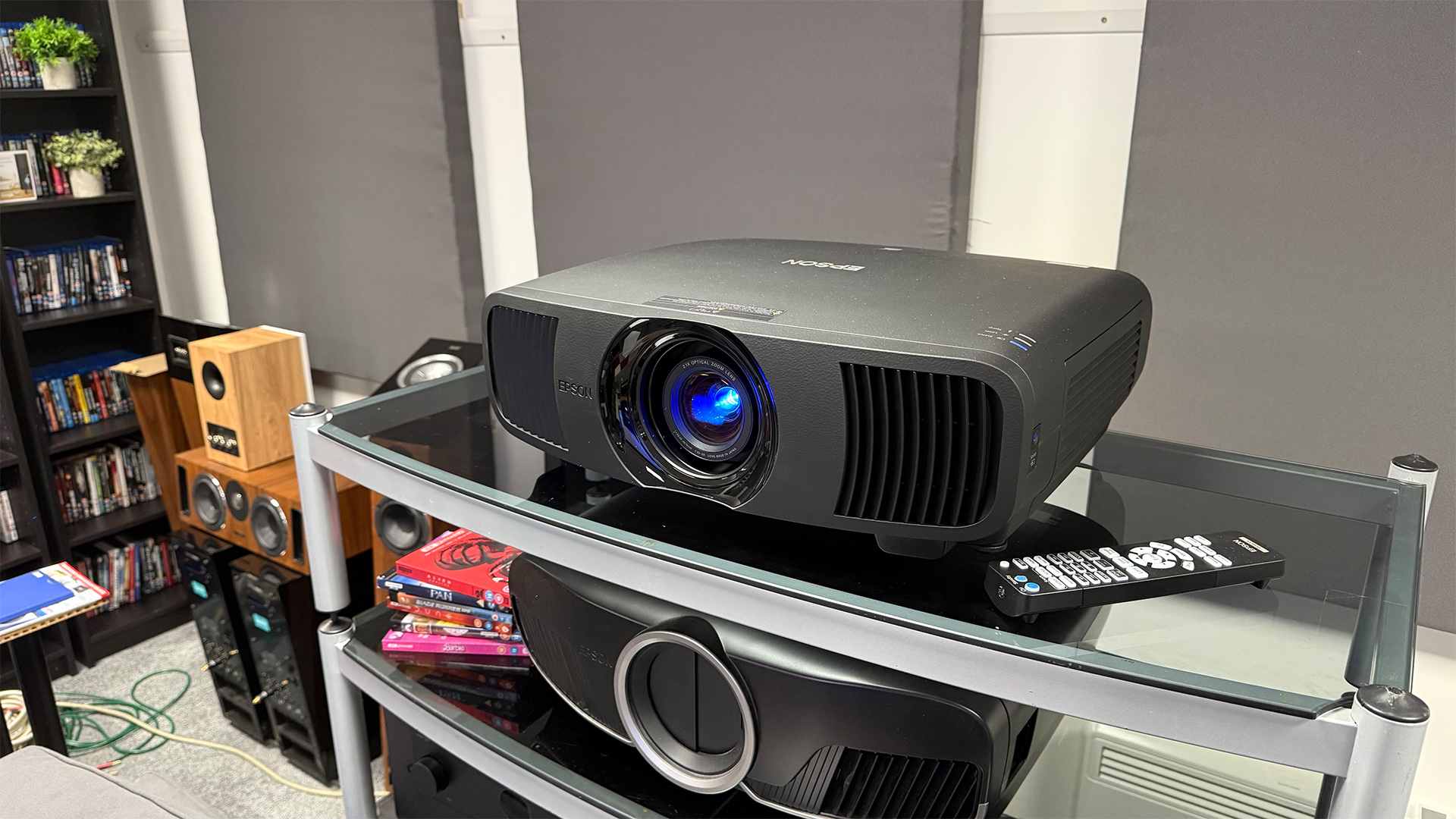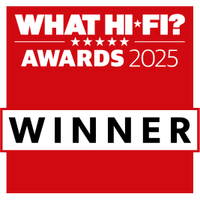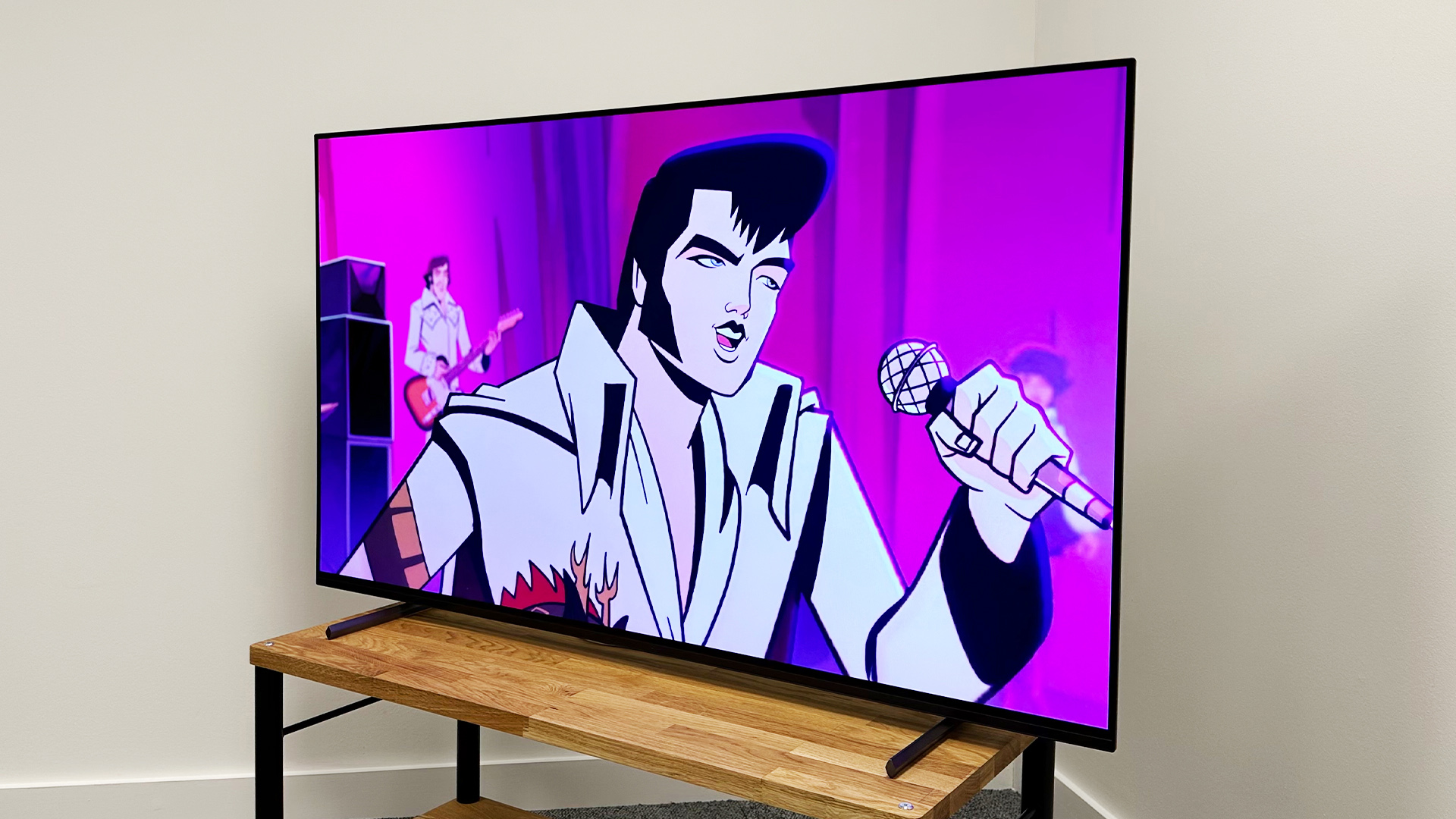What Hi-Fi? Verdict
For a dark room home cinema, the EH-LS9000 is brilliantly effective, and great value given the level of performance it offers
Pros
- +
Beautifully crisp, punchy and three-dimensional picture quality
- +
Superb gaming specs and performance
- +
Quiet operation
Cons
- -
Struggles to produce properly deep blacks
- -
Confusing menus and settings
- -
No integrated streaming smarts
Why you can trust What Hi-Fi?
While Epson’s greatest push of late has been behind its new EF-72 coffee table projector, any concerns about the brand forgetting its serious home cinema roots should be put to rest by the EH-LS9000.
Described by the Japanese company as an “affordable high-end 4K projector”, the LS9000 sits below the LS12000 and shares much in common with it and the even more premium QB1000.
There have been downgrades to hit the lower price, of course, but they’ve been very prudently made and, to cut to the chase, this is an exceptional projector for the money.
Price
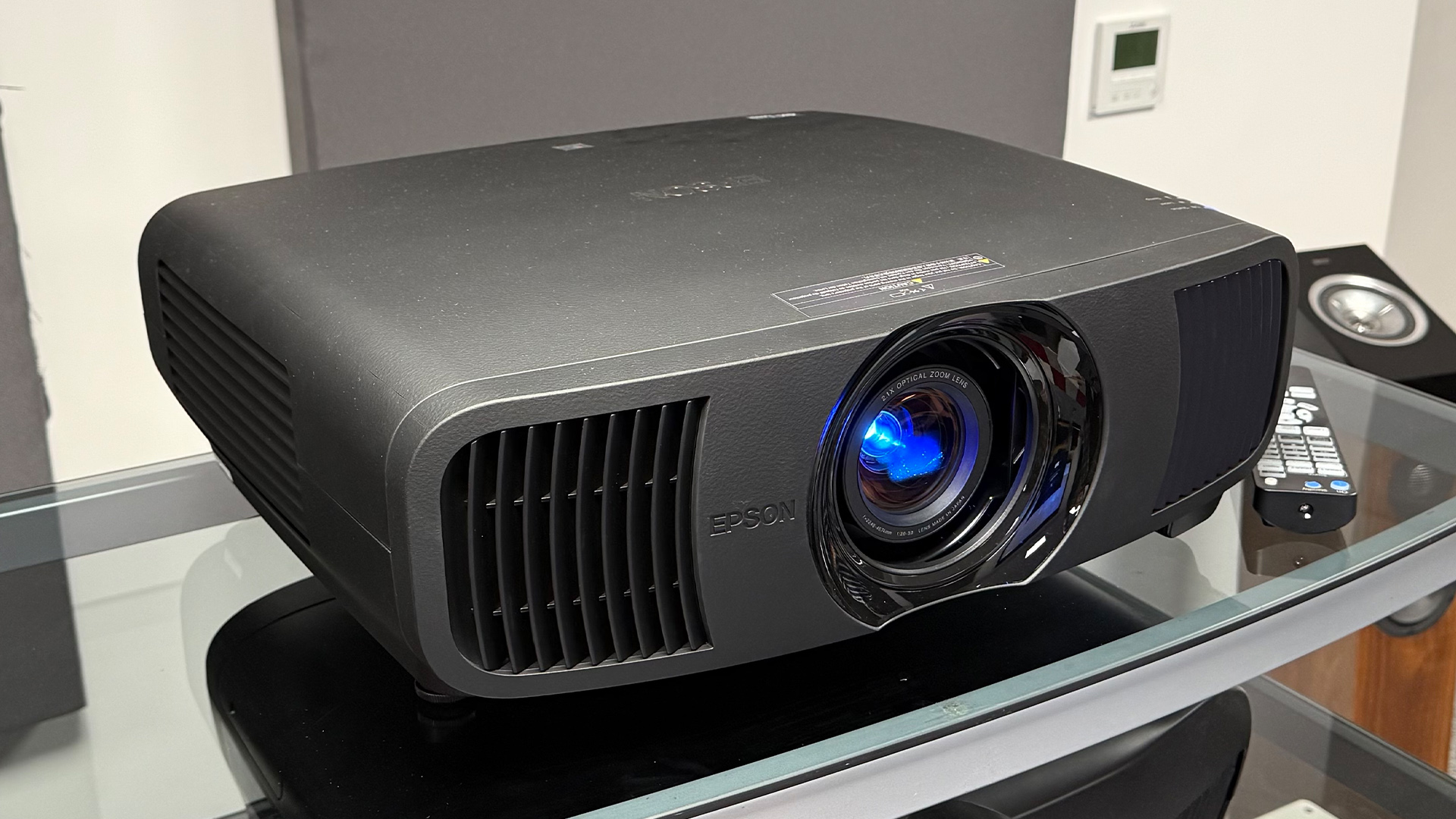
With its £2999 / $3999 / AU$7299 price for the EH-LS9000, Epson is definitely stretching the definition of “affordable” for most people.
Of course, what the brand means is that the LS9000 is affordable for a dedicated home cinema projector with its level of ability. And, as we’ll see, we’re inclined to agree.
For context, the EH-LS12000, which sits above it, costs £3999 / $4999 / AU$8999, and the even more premium EH-QB1000 is £4999 / $7999 / AU$11,900. Those are both five-star projectors, so the LS9000 is in excellent company.
We’re not exactly spoiled for choice at the LS9000’s price. For years, we recommended the EH-TW9400 at this level, but that’s the model that this new projector is (belatedly) replacing.
The latest hi-fi, home cinema and tech news, reviews, buying advice and deals, direct to your inbox.
The BenQ W4100i is the only obvious non-Epson alternative. That’s a decent option, but one with a slight identity crisis – by trying to satisfy both the living room and dedicated home cinema scenarios, it has found itself slightly straddling both, whereas the EH-LS9000 is very clear in its intentions.
Design
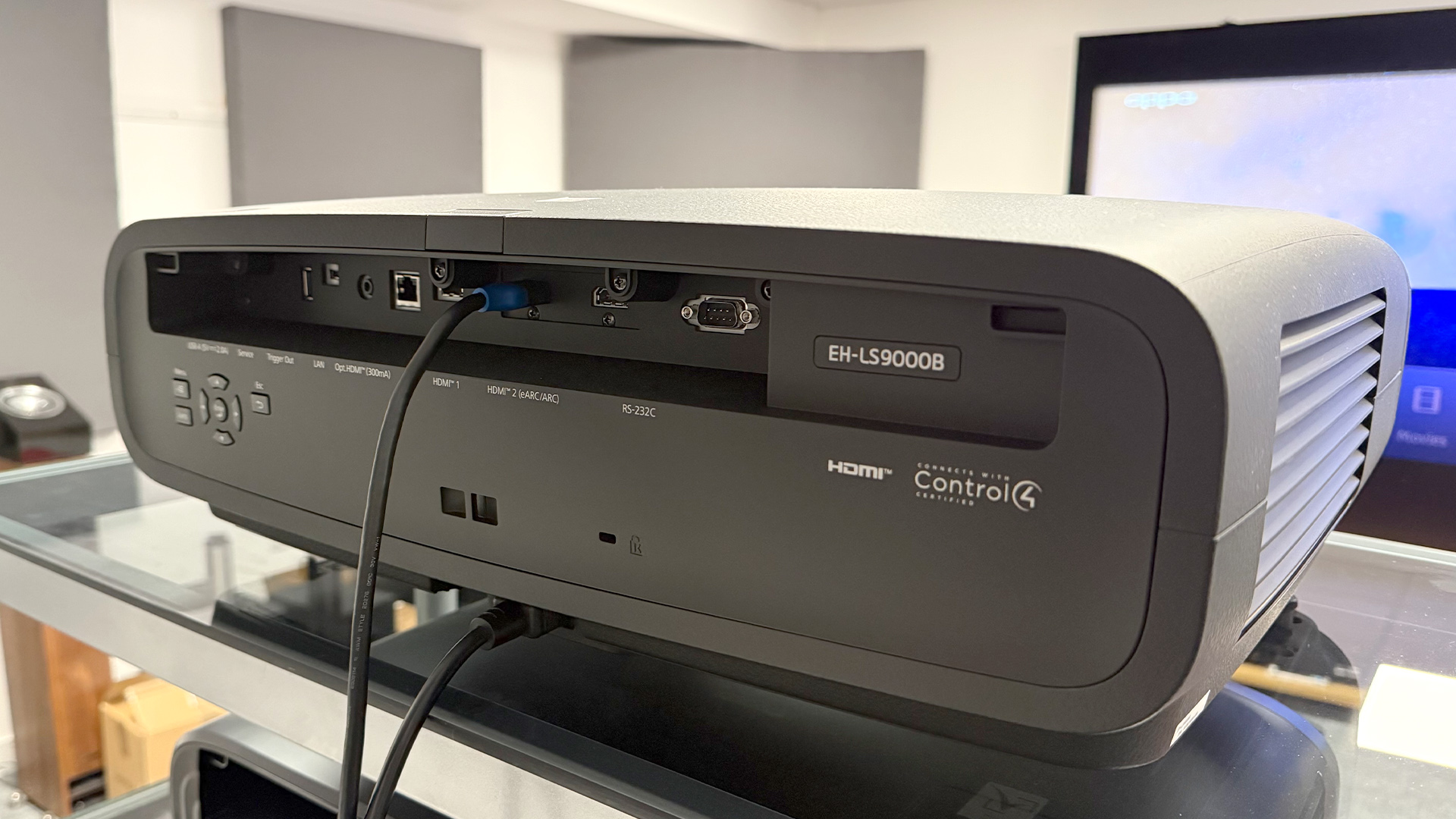
The Epson EH-LS9000 is primarily intended for use in a dark (preferably blacked-out) home cinema room, and the matte black finish of our review sample seems to absorb what little light there is so that it effectively disappears.
This black version has the full model number EH-LS9000B, but there is also an EH-LS9000W which, you guessed it, has a white finish. The models are otherwise identical.
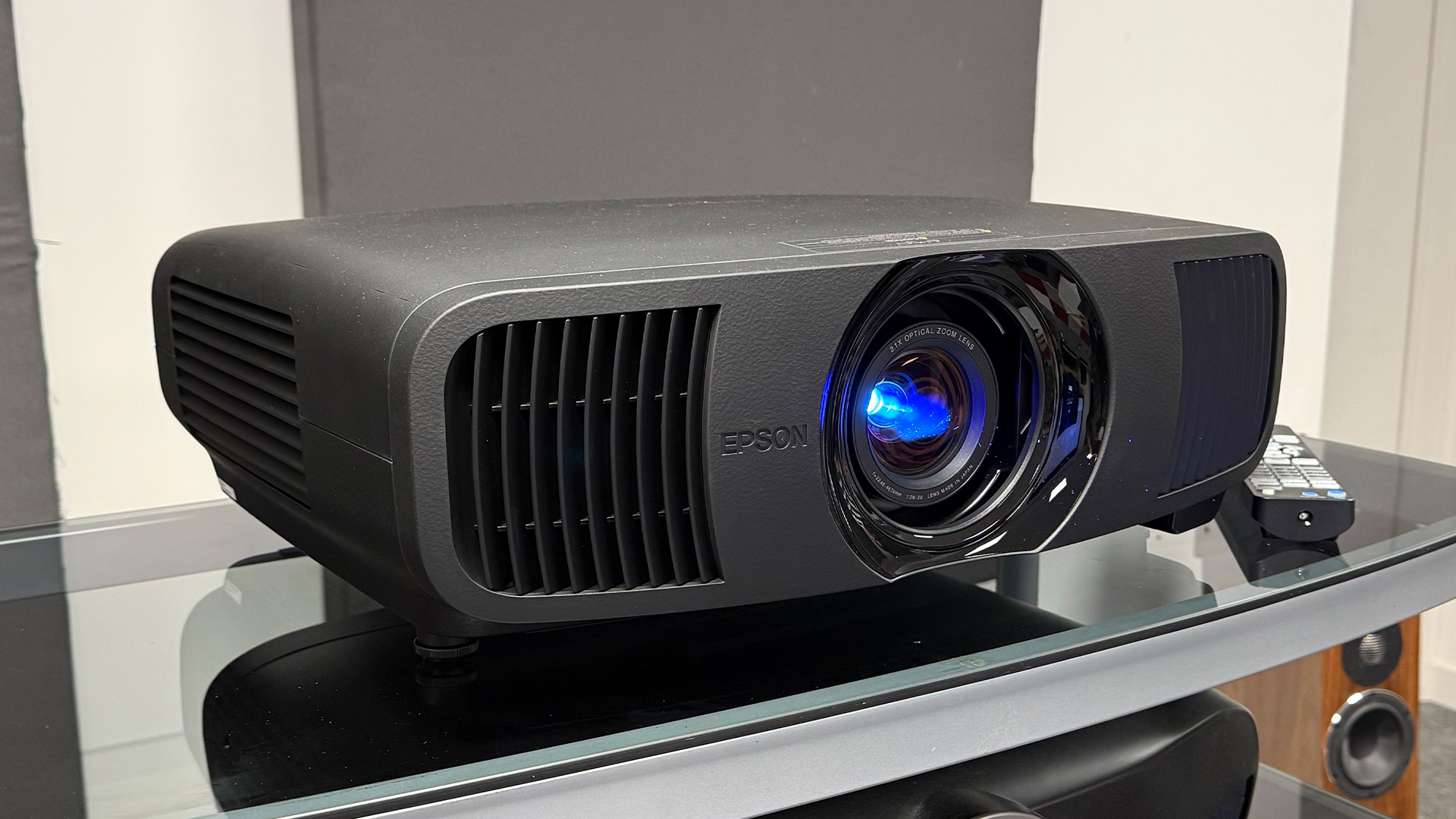
Projector type Laser-lit LCD
Screen size 50 to 300 inches (claimed)
Native resolution 4K (via pixel shifting)
Input lag 19ms (60Hz)
HDR support HLG, HDR10, HDR10+
Dimensions 19 x 52 x 45cm
Weight 12.7kg
There’s a very subtle, faux-leather texture to the projector, but you won’t even notice that unless you get quite close to it. What you will notice, assuming the lights aren’t off, is that this is a bit of a beast, measuring 19 x 52 x 45cm.
Those are identical dimensions to the EH-LS12000 and EH-QB1000, and the reason is simple – they all use the same chassis. The only obvious difference between them is the finish of the ring around the lens: the QB1000’s is gold, the LS12000’s is silver, and the LS9000’s is plain black.
As should be abundantly clear, like its siblings, this is a projector that’s designed for permanent placement in a serious home cinema space, rather than ad-hoc use. That said, we find that the motorised lens and straightforward controls make it very easy to get the image to fit our 100-inch screen.
Speaking of motors, the lens cover is motorised, too. It’s a little noisy and flimsy, but a motorised cover that automatically opens and closes when you switch a projector on or off is never not a cool thing.
And speaking of noise, the EH-LS9000 is very quiet indeed until you push the brightness past 95 per cent, which isn’t necessary for the best picture performance, and even when the fan does fully kick in, it’s still inaudible against the majority of most movie soundtracks.
The LS9000 comes with a rather meat-and-potatoes remote that’s a bit chunky and cluttered, but that does have a backlight (activated by the button in the top-right corner).
There are also on-body controls: the source and power buttons are found on the side near the front of the projector, while the rest of the controls are found on the back panel next to a recess, within which the connections are nestled.
Features
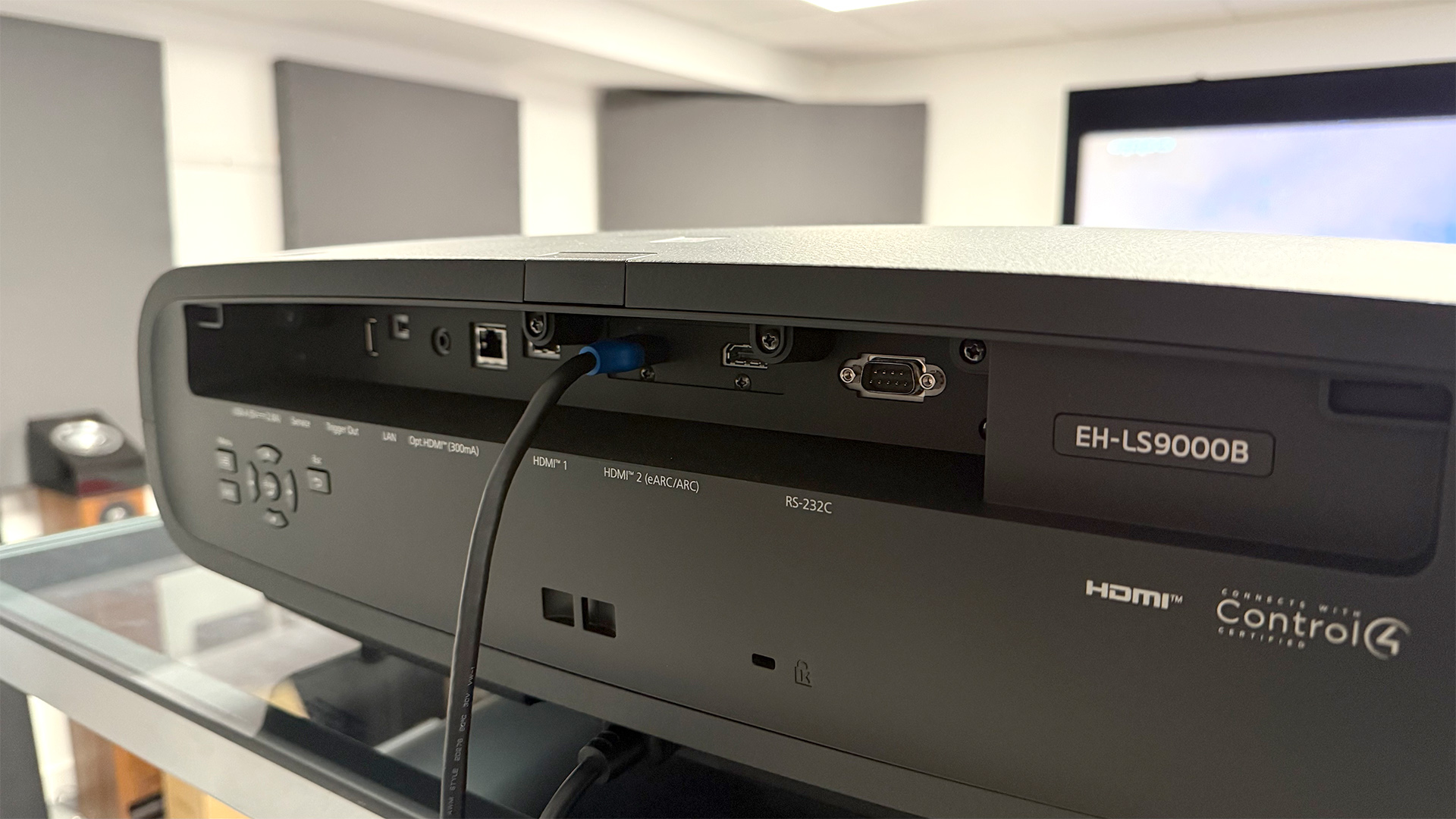
Those connections include two HDMIs, both of which can handle 4K/120Hz signals. It’s gratifying that when selecting features to sacrifice, Epson chose to spare these HDMI 2.1 sockets, as they will make the EH-LS9000 very appealing to serious gamers who can’t stretch to the LS12000 or QB1000.
What has been sacrificed is a little bit of brightness, with the LS9000 capable of hitting a claimed 2200 lumens, whereas the LS12000 can hit 2700 lumens and the QB1000 goes all the way up to 3300 lumens.
As already discussed, that makes the LS9000 less well-suited to bright room conditions, but it certainly doesn’t mean we expect it to look dull. This is still a higher claimed peak brightness than Sony’s superb VPL-XW5000ES, which is rated at 2000 lumens.
Epson still claims a contrast ratio of 2,500,000:1 for the EH-LS9000, though, as we’ve discussed in the past, such figures aren’t really of significant value – it’s the real-world performance that counts.
It’s of course worth mentioning that while this is sold as a 4K projector, it doesn’t have a native 4K resolution but instead achieves its 4K-ness through pixel shifting.
While this might seem like an instant red flag, pixel shifting has proved time and time again to be capable of producing brilliantly sharp and detailed picture quality, not least with LS12000 and QB1000.
And while those more expensive Epsons sit in price categories where native 4K models are just about available, there are none of note at the LS9000’s level.
As with Epson’s other models, the LS9000 features a laser light source (the days of projector lamps are behind us). The brand says this is good for 20,000 hours of use. That’s enough life for you to watch a two-hour movie every day for the next 27 years.
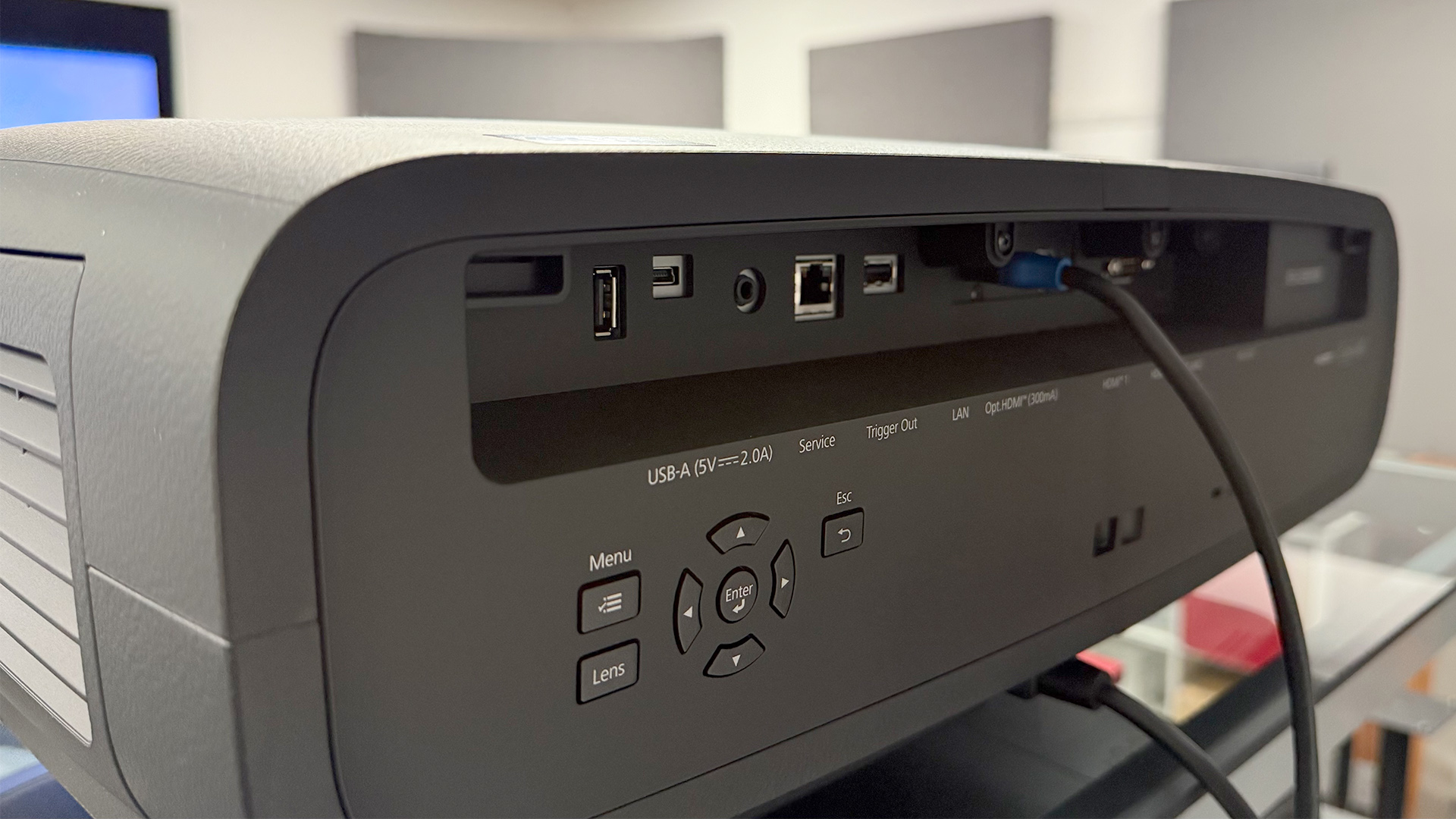
HDR support is impressive, with the EH-LS9000 able to handle the dynamic HDR10+ format as well as the static HDR10 and HLG formats. The extra scene-by-scene information of HDR10+ should allow the Epson to wring more out of the content that carries it.
The EH-LS12000 also features Epson’s own scene-by-scene contrast enhancer, called Scene Adaptive Gamma, but this is missing from the LS9000. However, the 4K Frame Interpolation and Super Resolution features do make it down to this level. They’re designed to smooth motion and sharpen the image, respectively.
One final note before we move on to the picture performance: Epson uses highly unusual terms for many of its settings and presets, and hides some of these in rather obscure locations. This can make serious tweaking rather confusing. Luckily, though, it is quite easy to get a great image out of the EH-LS9000.
Picture

While presets with names such as ‘Dynamic’ and ‘Vivid’ are usually best avoided like the plague, the Vivid preset actually turns out to be the EH-LS9000’s best, as it was with the EH-QB1000.
This is the preset that gets the most out of the LS9000’s specs and processing, and it produces a picture with quite exceptional vibrancy and three-dimensionality without making things look forced or veering drastically away from cinematic intent.
The only further tweak we feel is necessary is to turn off the 4K Frame Interpolation. Some people might like this set to one of the lowest levels, but we still find this a little soap opera-y, so prefer to turn it off entirely.
Playing Thunderbolts on 4K Blu-ray, as three of our anti-heroes trudge dejectedly across a desert landscape, we’re instantly struck by the sharpness and detail of the image. There’s an awesome solidity and depth to the picture, which is particularly impressive at the 100-inch scale of our screen, and you almost feel as if you could reach into the image and poke the little figures in the distance.
Colours are both vivid and natural, and the shading is excellent: the sky over the desert fills the top third of the image and blends beautifully from very light blue on one side to a deeper, more vibrant blue on the other.
The rocky cliffs are craggy and detailed, and they stand out brilliantly against the sky, while the few clouds are crisp, bright white and full of fluffy texture.
Switching to Blade Runner 2049, the EH-LS9000 delivers the several tricky panning shots with plenty of naturalism, even with the Frame Interpolation feature switched off. Our chosen Vivid mode doesn’t artificially boost the colours in the way you might expect, either, and the movie’s subdued colour palette is preserved.
Once again, we’re hugely impressed by just how sharp and detailed the entire presentation is, bringing the world to life in a way that few rivals can manage.
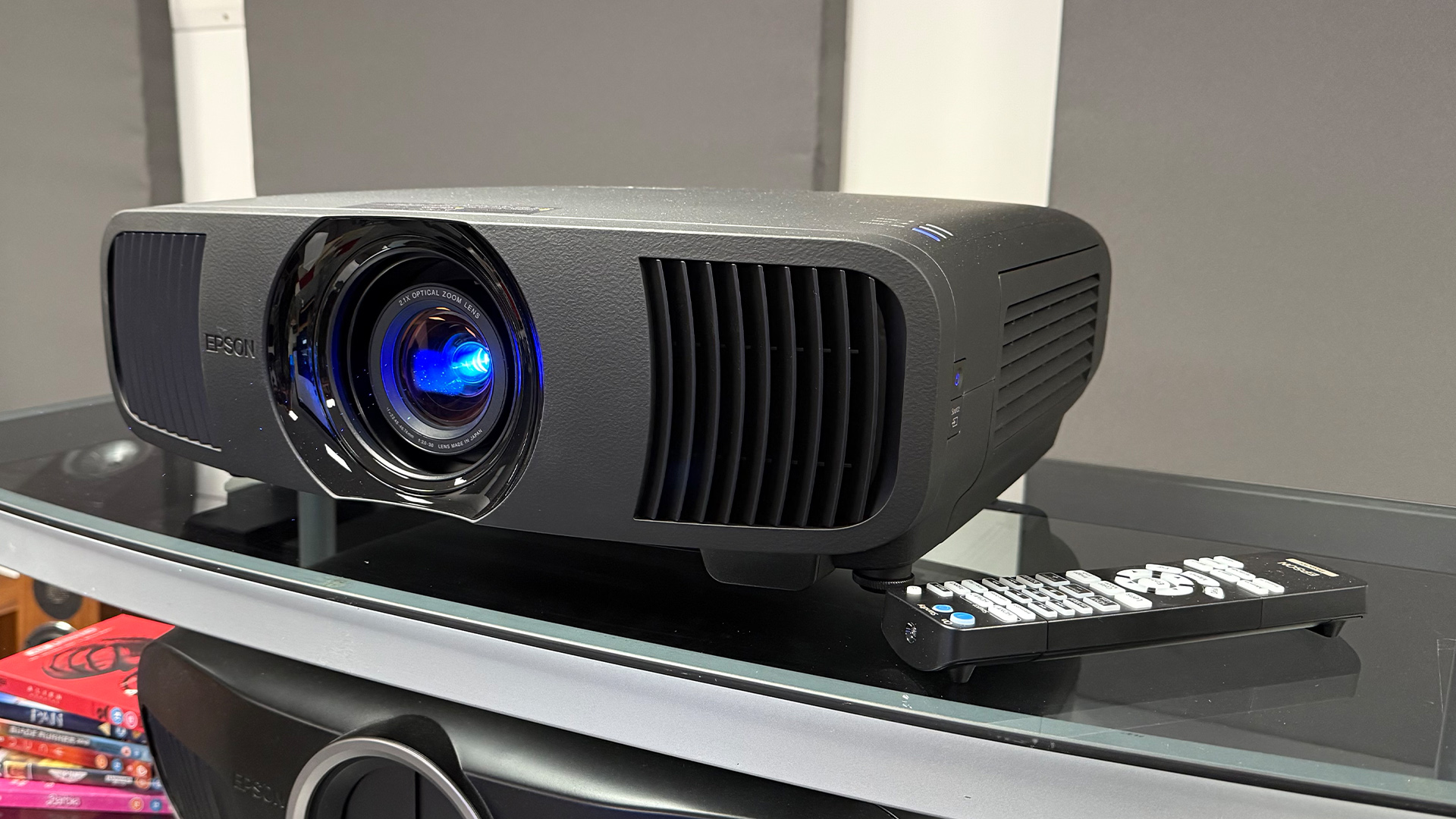
We switch to Alex Garland’s Civil War, again on 4K Blu-ray. The projector does an awesome job with the movie's brighter scenes, and it really makes the most of the unusually crisp and vibrant transfer, but the final section, which concerns a night-time attack on Washington DC, exposes its one limitation – a relative lack of black depth.
As we get a close-up of Kirsten Dunst’s Lee, half dimly lit and half in the dark, what should be brilliant black or at least very dark grey is unfortunately a slightly lighter grey that doesn’t have the same impact. No amount of adjustment to settings fixes this, either, and those presets that go less bright than the Vivid mode don’t go any more dark.
Shadow detail is still good, so you don’t miss out on any picture information in these dark scenes, but the lack of black does mean that dark shots miss out on the solidity that is otherwise one of LS9000’s greatest strengths.
To end our testing with a bit of fun, we connect our PlayStation 5 to the EH-LS9000. As promised, the console confirms that the projector will handle the 4K/120Hz signals it sends, and when we fire up Ratchet & Clank: Rift Apart, we’re treated to a really smooth and responsive gameplay experience.
It looks superb, too. Few projectors, particularly at this level, can do justice to the colourful pop of Insomniac’s sci-fi cartoon creation, but the Epson recreates the alien worlds in vivid, three-dimensional fashion. This is a great device to play games on.
Verdict
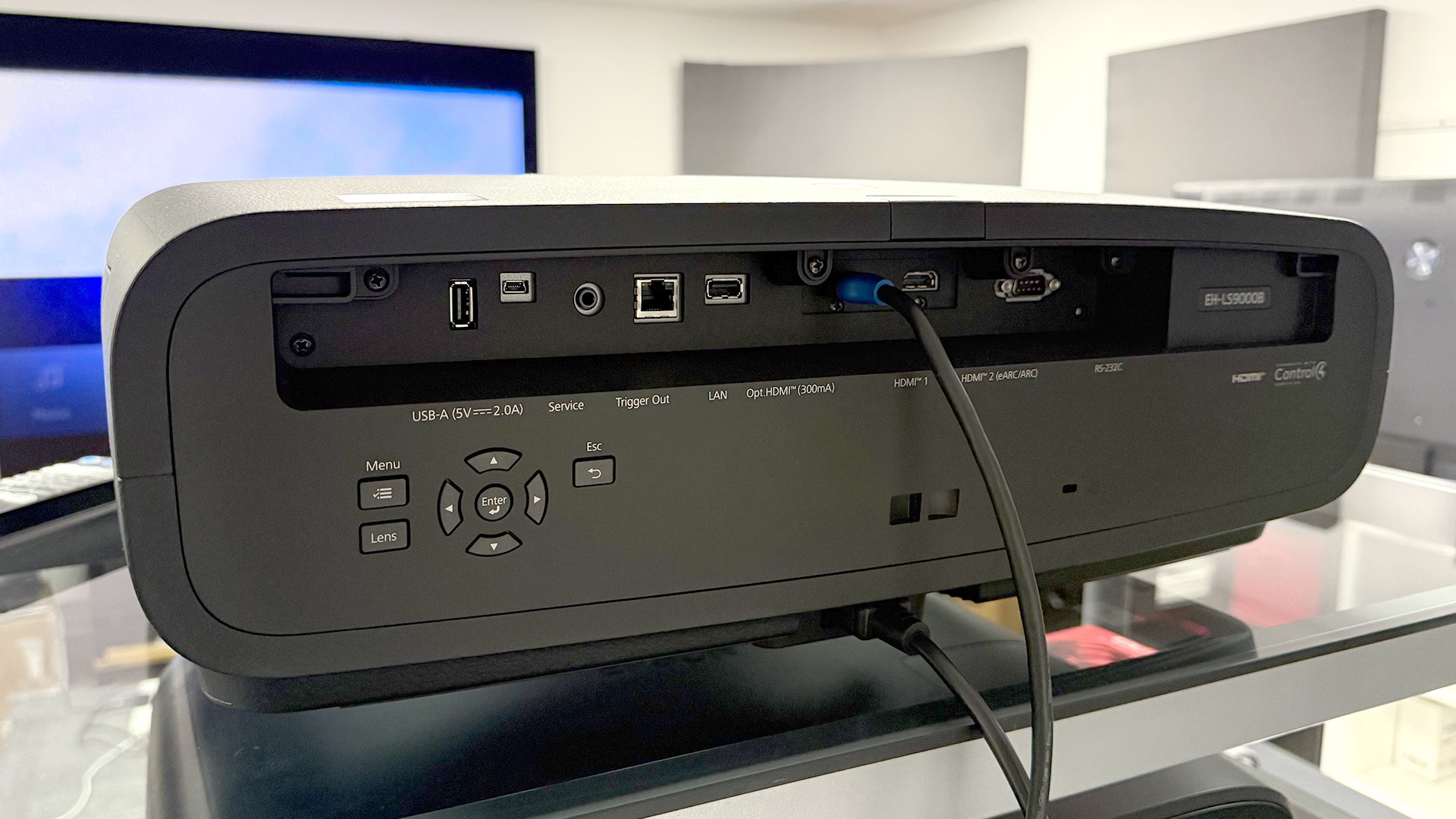
It’s taken a while, but we finally have a worthy replacement for the multi-Award-winning EH-TW9400.
A slight lack of black depth aside, the Epson EH-LS9000 is an exceptional home cinema projector that redefines performance expectations at this level.
SCORES
- Picture 5
- Design 4
- Features 5
MORE:
Read our review of the BenQ W4100i
Also consider the Epson EH-LS12000B
Read our Epson EH-QB1000
Best projectors: budget, 4K and ultra-short-throw
Tom Parsons has been writing about TV, AV and hi-fi products (not to mention plenty of other 'gadgets' and even cars) for over 15 years. He began his career as What Hi-Fi?'s Staff Writer and is now the TV and AV Editor. In between, he worked as Reviews Editor and then Deputy Editor at Stuff, and over the years has had his work featured in publications such as T3, The Telegraph and Louder. He's also appeared on BBC News, BBC World Service, BBC Radio 4 and Sky Swipe. In his spare time Tom is a runner and gamer.
- Lewis EmpsonSenior Staff Writer
You must confirm your public display name before commenting
Please logout and then login again, you will then be prompted to enter your display name.
